By Gabrielle. Photos and styling by Amy Christie.
We’ve used beets to get shades of red. We’ve used onions to get shades of orange. We’ve used turmeric to get shades of yellow. We’ve used cabbage to get shades of blue. But what about greens? Did we forget about greens? Never!
Today, we’re going to mix up one batch of turmeric dye and one batch of cabbage dye, and show you how to dip eggs in both to achieve shades of green. It’s like a lesson in color theory, plus a lesson in Easter egg dyeing, all in one!
For this finale in our natural egg-dyeing series, Amy Christie once again took the gorgeous photos, and she’s got all the tips for us too.
Let’s get to dipping.
Supplies:
Batch of blue dye made from cabbage
– 1 head of purple cabbage
– 1 tablespoon vinegar
– 4 cups water
Batch of yellow dye made from turmeric
– 6 tablespoons turmeric
– 1 tablespoon white vinegar
– 4 cups water
– eggs, empty or hard-boiled
– strainer
– large saucepan
To make blue dye, begin by heating water on the stove in the large saucepan. Roughly chop the cabbage and separate the leaves. When the water comes to a boil, add the cabbage and the vinegar and simmer for 25-30 minutes. (It stinks a bit!) When ready, strain the cabbage from the mixture, leaving the liquid dye.
To make yellow dye, add the turmeric and vinegar to 4 cups of extra hot water. Stir the turmeric until it has dissolved.
To create green, first soak the eggs in the natural yellow dye. When they’ve been dyed the intensity of yellow that you would like, add the eggs to the blue dye and let them soak. When they’ve reached the hue you’d like, set them in the egg carton to dry.
Here are the things we learned about dying things green:
– To make green, you must have both yellow and blue natural dye.
– To keep the yellow dye clean, first dip the eggs in the yellow, then in the blue. It doesn’t really work the other way around.
– The intensity of the color depends on how long you leave the eggs in the dye. The more time they sit in the dye, the brighter and more intense the colors will be. Yellow seems to level off after 20-30 minutes but the blue deepens and deepens. The darkest hues were achieved after about 12 hours in the blue.
– The springy green was made by dying it yellow and then giving it a blue bath for between 5-10 minutes.
– The crazy designs are all due to cracks and the individual shells themselves.
– To dye the eggs overnight, put the dye in disposable cups inside a plastic container to avoid staining your own.
– If your eggs are hollow, you will have to use something to weigh them down. We suggest using another disposable cup with a little bit of water in it and setting it down on top of the hollowed egg. If your eggs hard-boiled, they’ll sink by themselves.
__
Thank you so much, Amy. This is delightful. Dear Readers, if you’ve been following along with this natural dye series, then like me, you’ve now concluded that with four batches of dye — made from beets, onions, turmeric, and cabbage — we can achieve pretty much any color we like!
The trick in my mind, is splitting up each dye batch into separate bowls — like two or three bowls of yellow, and two or three bowls of blue. Because if we start moving eggs from one color to the next, the dye is going to get a bit corrupted. So one bowl of yellow could be just for yellow. Another bowl of yellow could be for double-dipping from orange, and the third bowl of yellow could be for double-dipping from blue. Does that make sense?
And what fun color theory and chemistry lesson for the kids! If you give this a try, or have any of your own tips, I’d love to hear. Feel free to comment below.
P.S. — Find the other natural dye posts here: Red, Orange, Yellow, and Blue.
Credits: Images, styling & text by Amy Christie.

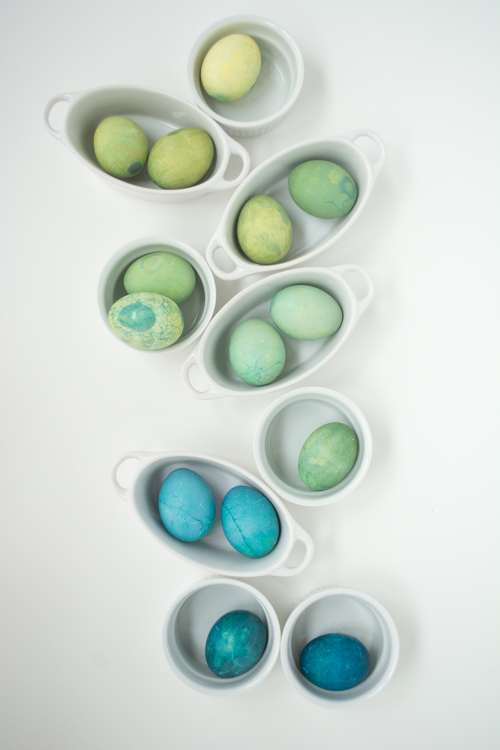
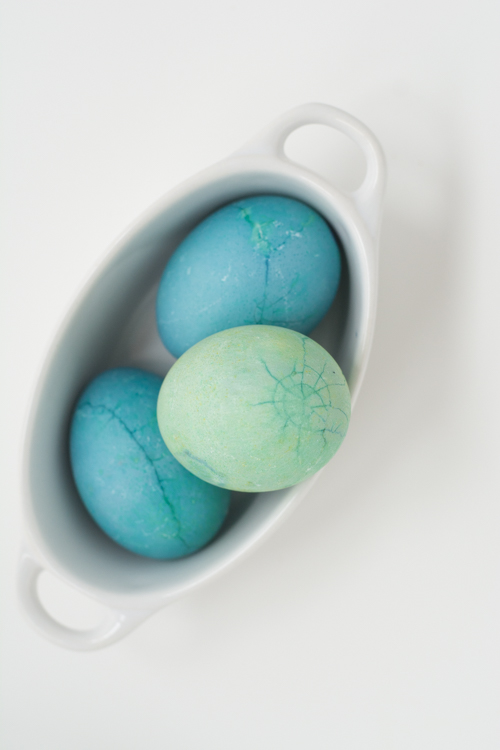
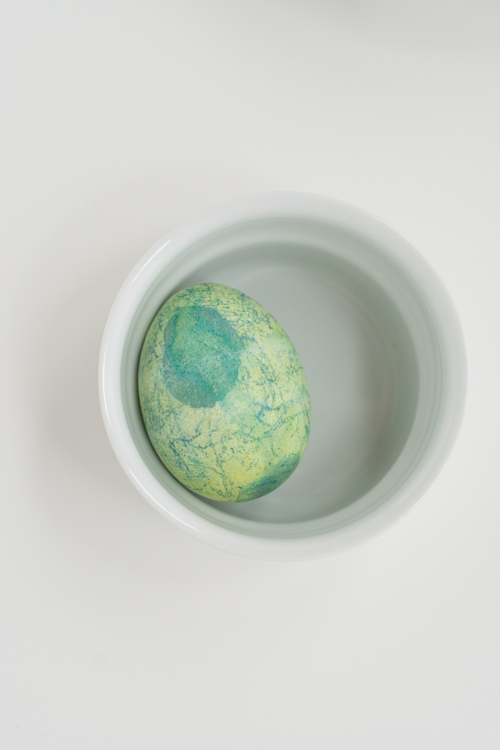
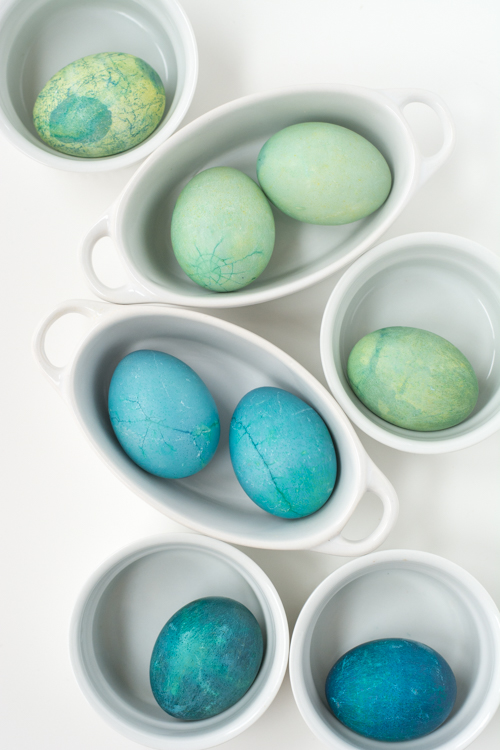

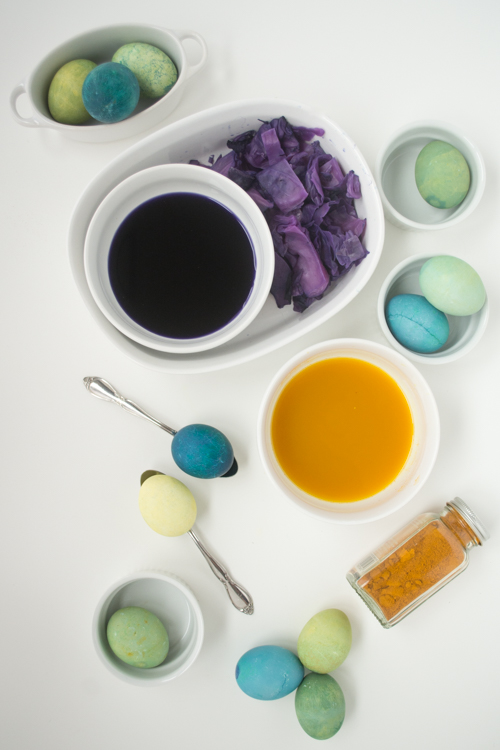
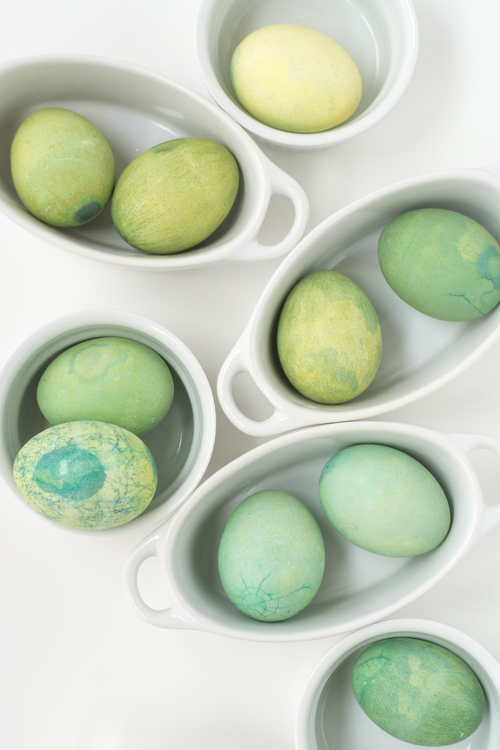
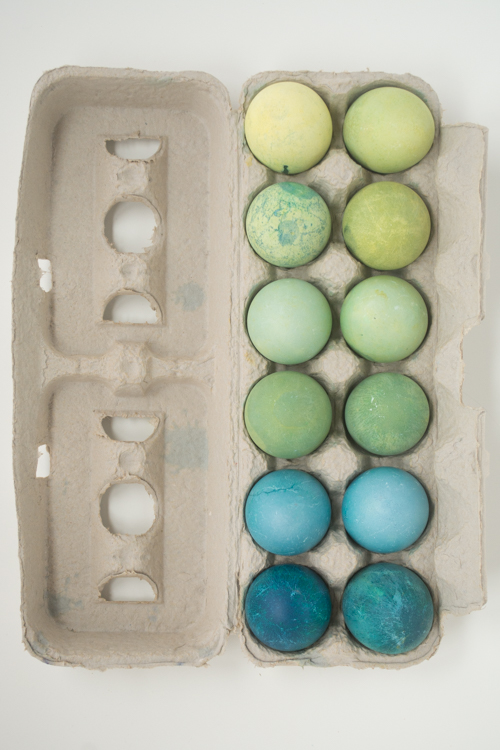

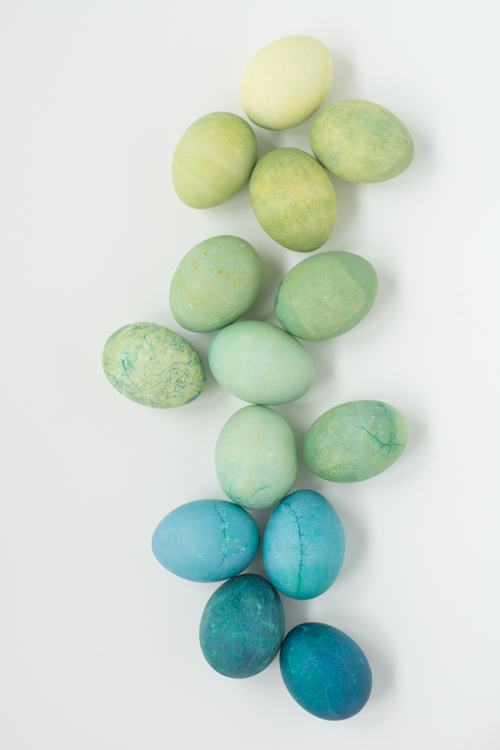
What a great set of posts! We have done naturally dyed eggs for the past two years, and I love the process. I’m sure I will try it again this year with some of the color combos you suggested. My problem: I have always done the dying a couple of days before Easter, and I’ve always found that the colors look a little blah by the time Easter rolls around. Is it just me? Maybe I’ll try dying them the day before this year. Anyways, thank you for the fun suggestions here!
I’ve heard of people rubbing vegetable oil on the eggs to help keep them bright. I’ve yet to try it!
Very fun to see all the colors of the rainbow done naturally!
http://www.theartfulscavenger.com/#!Designer-Peeves/cmbz/5697dd6a0cf2e94e3fb7a77c
Any good tips on how to hollow out the eggs?
I’m excited to try these!!
I got a nice, prehistoric looking green once from soaking eggs in the water left over from boiling artichokes. I like this happy green better, but if your looking for a muted green, they were very pretty!
Those blues are stunningly gorgeous! You did an amazing job!
Paige
http://thehappyflammily.com
Pingback: Naturally Dyed Easter Eggs… | a toddler in the trees